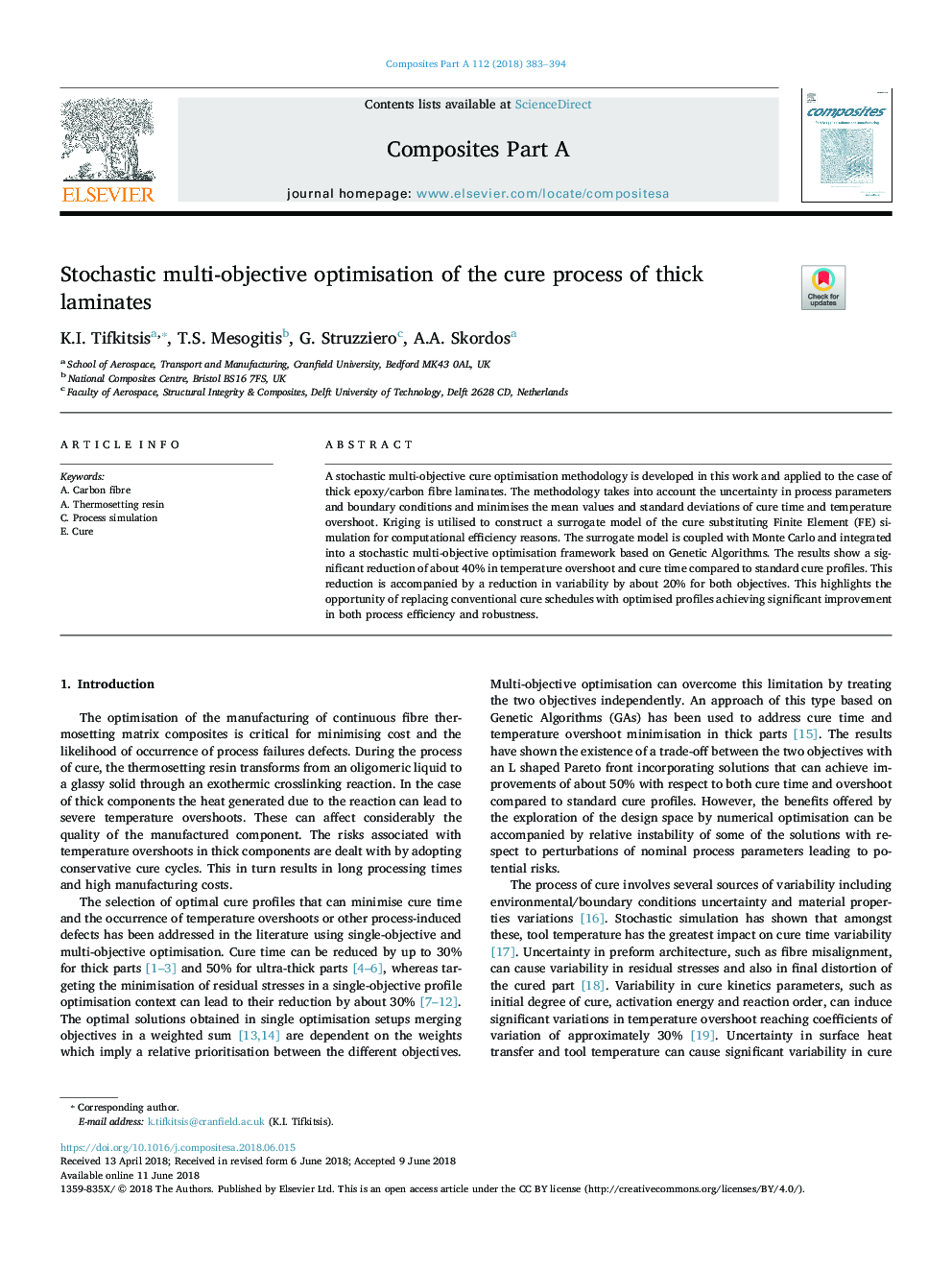| Article ID | Journal | Published Year | Pages | File Type |
|---|---|---|---|---|
| 7889456 | Composites Part A: Applied Science and Manufacturing | 2018 | 12 Pages |
Abstract
A stochastic multi-objective cure optimisation methodology is developed in this work and applied to the case of thick epoxy/carbon fibre laminates. The methodology takes into account the uncertainty in process parameters and boundary conditions and minimises the mean values and standard deviations of cure time and temperature overshoot. Kriging is utilised to construct a surrogate model of the cure substituting Finite Element (FE) simulation for computational efficiency reasons. The surrogate model is coupled with Monte Carlo and integrated into a stochastic multi-objective optimisation framework based on Genetic Algorithms. The results show a significant reduction of about 40% in temperature overshoot and cure time compared to standard cure profiles. This reduction is accompanied by a reduction in variability by about 20% for both objectives. This highlights the opportunity of replacing conventional cure schedules with optimised profiles achieving significant improvement in both process efficiency and robustness.
Related Topics
Physical Sciences and Engineering
Materials Science
Ceramics and Composites
Authors
K.I. Tifkitsis, T.S. Mesogitis, G. Struzziero, A.A. Skordos,
